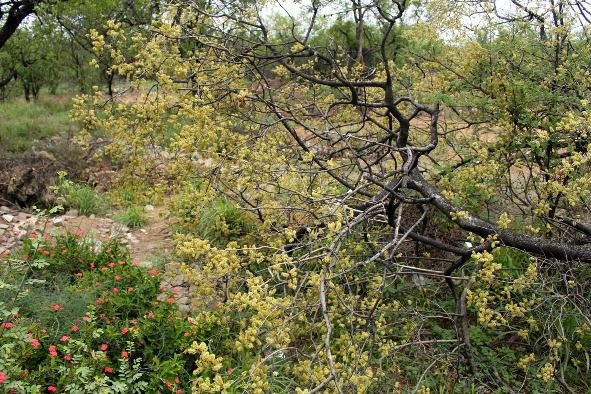Combretum

Author: Ivan Lätti
Photographer: Piet Grobler
Combretum or bushwillow is a genus of trees, shrubs and woody climbers in the Combretaceae family. The trees sometimes have microscopic, stalked glands and slightly bigger, multicellular scales on plant parts.
The simple leaves are opposite, sometimes in whorls of three or four, rarely alternate. The leaves are mostly petioled or stalked, sometimes shortly so. The petioles are sometimes persist, becoming hooked spines in the scrambling species. Leaf margins are almost always entire.
The bisexual, mostly regular flowers have floral parts in fours or fives. The inflorescences are elongated spikes or racemes, sometimes short, nearly head-like, growing solitary or in groups from leaf axils or at stem-tips. The receptacle is usually divided into a lower and upper part, the latter usually the disc when it is present. The disc is hairy in some species, sometimes with a free margin. The usually four or five sepals are triangular to thread-like, sometimes poorly developed.
The four or five petals, and sometimes there are none at all, range from inconspicuous in size to bigger than the sepals, differently coloured across the species. There are usually twice as many stamens as petals, positioned in one or two series in the upper receptacle and exserted beyond the petal tips. The ovary is inferior, the style is free, the stigma at its tip sometimes expanded.
The fruit is four or five-winged, ridged or angled and stalked or not. Most fruits do not dehisce or do so tardily.
There are about 250 Combretum species in the warmer climate regions worldwide, excluding Australia and some islands. There are about 30 species in southern Africa, none in the Free State or the Western Cape.
The plant in picture is Combretum apiculatum subsp. apiculatum (Leistner, (Ed.), 2000; Coates Palgrave, 2002).

